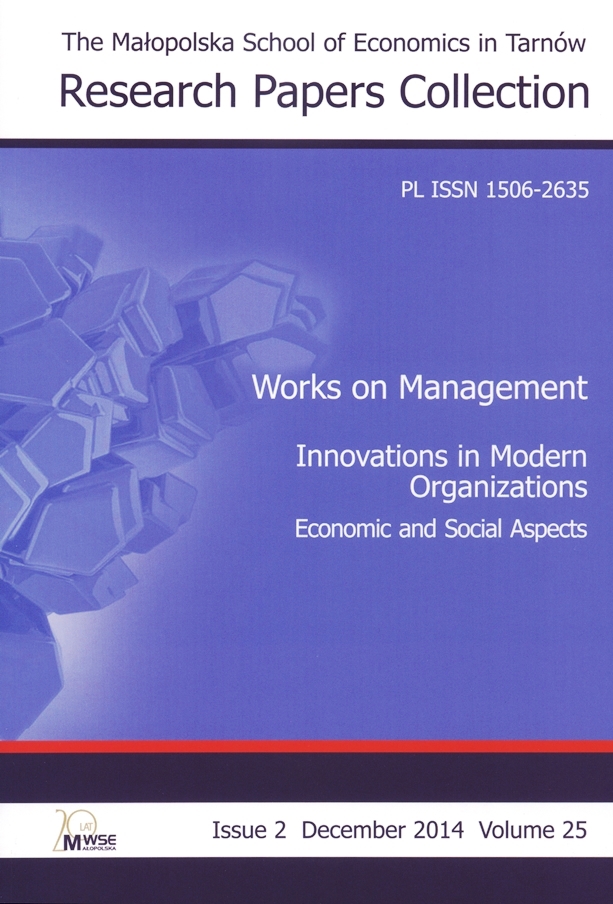Abstrakt
Przez ostatnie piętnaście lat budownictwo mieszkaniowe w niektórych krajach europejskich rozwijało się bardzo intensywne, podczas gdy w innych nie. Przyczyniło się to do wzrostu zasobu mieszkaniowego, co wyjaśniono jako skutek popytu, odgrywającego w tym okresie znaczącą rolę w mechanizmach rynku mieszkaniowego oraz jednocześnie je pobudzającego. Chociaż siła popytu jest podobna w całej Europie, nowa struktura podaży zareagowała ze zdecydowanym natężeniem w zależności od ekonomii danego kraju. Niniejsza praca dokonuje przeglądu literatury, poszukując motywów różnych reakcji na wzrost cen domów w sektorze developerskim oraz konsekwencji tegoż wzrostu. Literaturę można podzielić na dwie grupy: tych autorów, którzy sugerują stabilną elastyczność podaży w krótkim / długim okresie oraz tych, którzy utrzymują, że elastyczność zmienia się dramatycznie, odzwierciedlając reakcję deweloperów na innowacje rynkowe. Różnice w reakcjach na podaż nowych mieszkań w krajach europejskich pozostają szerokim obszarem dla badaczy rynku mieszkaniowego chcących wyjaśnić, jak ceny mieszkań zmieniają się w zależności od regionu.
Bibliografia
Arnott, R. (1987). Economic theory and housing. In: Handbook of regional and urban economics. Vol. 2, chap. 24 (pp. 959–988). ISBN 0444879706.
Zobacz w Google Scholar
Barker, K. (2003). Review of housing supply: Securing our future housing needs: interim report―analysis. London: HMSO. ISBN 780947819781.
Zobacz w Google Scholar
Blackley, D. M. (1999). The long-run elasticity of new housing supply in the United States: Empirical evidence for 1950 to 1994. Journal of Real Estate Finance and Economics, 18 (1), 25–42.
Zobacz w Google Scholar
Bramley, G. (1993). Land-use planning and the housing market in Britain: The impact on housebuilding and house prices. Environment Planning, A 25, 1021–1052.
Zobacz w Google Scholar
Bramley, G. (2003). Planning regulation and housing supply in a market system. In: T. O’Sullivan, K. Gibb (eds.). Housing economics and public policy. London: Blackwell Science. ISBN 0632064617.
Zobacz w Google Scholar
De Leeuw, F., Ekanem, N. F. (1971). The supply of rental housing. The American Economic Review, 61, 806–817.
Zobacz w Google Scholar
DiPasquale, D. (1999). Why don’t we know more about housing supply? Journal of Real Estate Finance and Economics, 18, 9‒23.
Zobacz w Google Scholar
DiPasquale, D., Wheaton, W. (1994). Housing market dynamics and the future of housing prices. Journal of Urban Economics, 35, 1‒28.
Zobacz w Google Scholar
Glaeser, E. L., Gyourko, J., Saks, R. E. (2005). Urban growth and housing supply, HIER Discussion Paper, 2,062, SSRN papers series no. 658343
Zobacz w Google Scholar
Goodman, A. C. (2005). The other side of eight mile: Suburban population and housing supply. Real Estate Economics, 33 (3), 539‒569.
Zobacz w Google Scholar
Green R. K., Malpezzi S. (2003). A primer on U.S. housing markets and policy. Washington, D.C.: The Urban Institute Press for the American Real Estate and Urban Economics Association (Monograph Series, no. 3).
Zobacz w Google Scholar
Hanushek, E. A., Quigley, J. M. (1979). The dynamics of the housing market: A stock adjustment model of housing consumption. Journal of Urban Economics, 6 (1), 90‒111.
Zobacz w Google Scholar
Maisel, S. J. (1963). A theory of fluctuations in residential construction starts. The American Economic Review, 53 (June), 359‒383.
Zobacz w Google Scholar
Malpezzi, S., Maclennan, D. (2001). The long-run price elasticity of supply of new residential construction in the United States and the United Kingdom. Journal of Housing Economics, 10, 278‒306.
Zobacz w Google Scholar
Malpezzi, S., Vandell, K. (2002). Does the low-income housing tax credit increase the supply of housing? Journal of Housing Economics, 11, 360–380.
Zobacz w Google Scholar
Mayer, C. J., Somerville, C. T. (2000). Residential construction: Using the urban growth model to estimate housing supply. Journal of Urban Economics, 48, 85‒109.
Zobacz w Google Scholar
Meen, G. (2002). An overview of issues in housing modelling and policy. The University of Reading Paper Series, November.
Zobacz w Google Scholar
Olsen, E. O. (1987). The Demand and supply of housing service: A critical survey of the empirical literature. In: E. S. Mills (ed.). Handbook of regional and urban economics. Vol. 2: Urban economics (pp. 989‒1022). Amsterdam: North-Holland. ISBN 0444879706.
Zobacz w Google Scholar
Pryce, G. (1999). Construction elasticities and land availability: A two-stage least-squares model of housing supply using the variable elasticity approach. Urban Studies, 36 (13), 2283‒2304.
Zobacz w Google Scholar
Quigley, J. M. (1997). The economics of housing. Northampton: Edward Elgar Publishing. ISBN 1852787546.
Zobacz w Google Scholar
Taltavull de La Paz, P. (2014). New housing supply and price reactions: Evidence from Spanish markets. Journal of European Real Estate Research, 7 (1), 4‒28.
Zobacz w Google Scholar
Topel, R., Rosen, S. (1988). Housing investment in the United States. Journal of Political Economy, 96, 718‒740.
Zobacz w Google Scholar
Whitehead, C. (2003). The economics of social housing. In: T. O’Sullivan, K. Gibb (eds.). Housing economics and public policy. London: Blackwell Science. ISBN 0632064617.
Zobacz w Google Scholar
© Copyright by Małopolska Wyższa Szkoła Ekonomiczna w Tarnowie. Artykuły są udostępniane na podstawie Creative Commons Attribution Uznanie autorstwa - Użycie niekomercyjne - Bez utworów zależnych 4.0 Licencja Międzynarodowa


